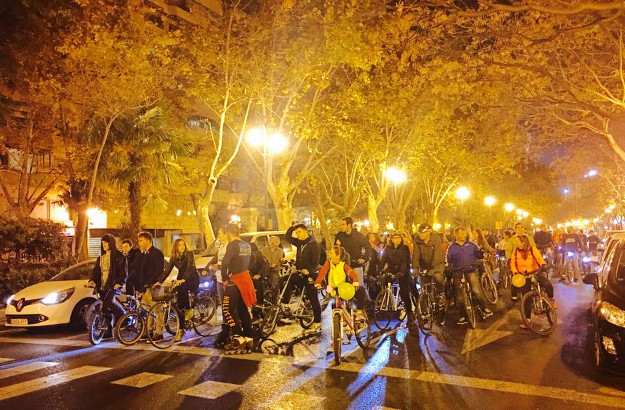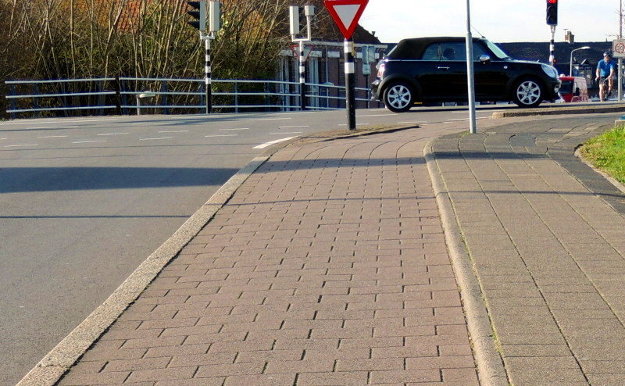I am going to talk about the Critical Mass in Valencia (Spain) today. It starts at the Virgin square in downtown the first Friday of every month at 19:30, no matter if it is raining, the wind blows, is a holiday or the sun shines. This fact as well as the climatic variations in the four seasons make that the number of participants varies along the year, reaching the highest figures in spring, summer and the first months of autumn.
It is particularly interesting that the Critical Mass has no direction, neither organizers. This way it can end in the same place where it starts, the beach, the former riverbed, close villages and so on.
Regarding the bikers, everyone can participate in this ride from children to senior citizens since the reached velocities allows to enjoy it without even sweating. Sometimes politicians come such as Giuseppe Grezzi, the current Mobility Advisor who is making efforts in favor of sustainable mobility. Moreover, one can see strange bicycles like the bike-monsters, the “bici-gelat” (a horchata truck bike, being horchata a typical Valencian tiger nut milk drink) or the odd boat-bike which swings as it was a true boat. People in handbikes and skaters are also welcomed. To contribute to the festive ambient, participants dress up like in carnival from time to time.
As far as logistics issues are concerned, police closes the Critical Mass to calm traffic almost every time. Indeed, bikers close themselves perpendicular streets to where it passes chatting to car drivers to pacify them because not each and every driver is a good one. What is more, the Spanish legislation is partly unknown, specifically the point which indicates that a group of cyclists is treated as a sole unit referred to zebra crossings, stops, traffic lights, traffic circles… One important point constitutes the fact that the bus line is respected as it represents a path of sustainability.
Finally, it ends with a huge applause and the ride is a success due to the collaboration of all people involved.

